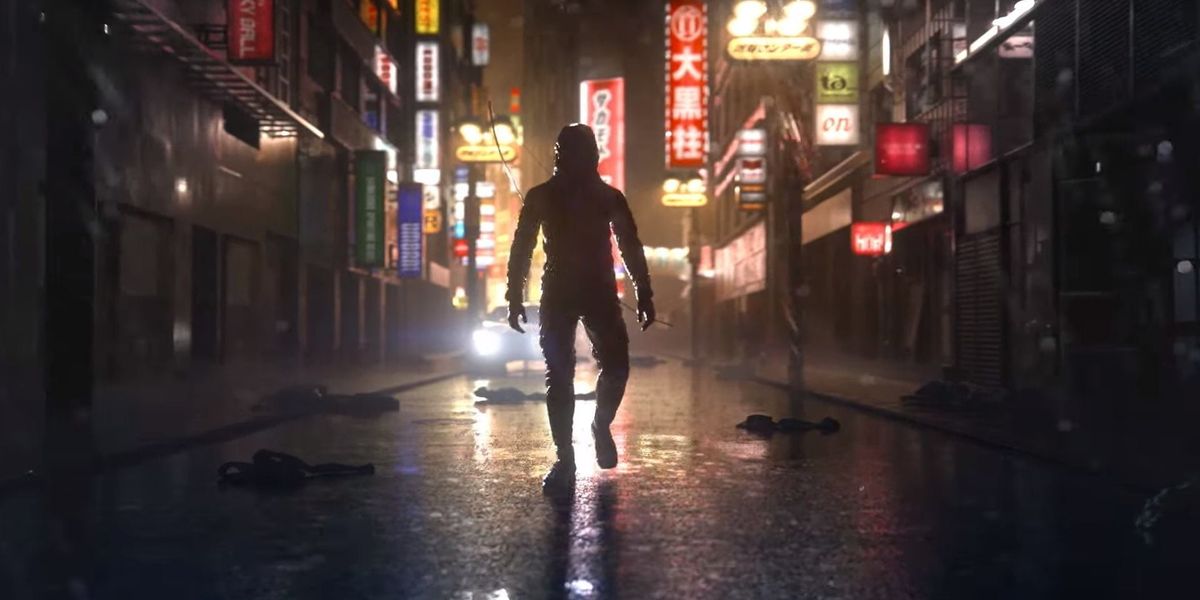A red moon looms large over what is at times a disconcertingly quiet Tokyo, littered with the clothes of its now-disappeared inhabitants. The lights are on. Music from the many nearby shops still rings out through the streets. It's haunting in part because, at times, it feels like little more than an unusually still night, yet a growing unease runs deep. Then a headless schoolgirl flying kicks you and somewhat kills the vibe.
This is GhostWire: Tokyo, the latest release from Tango Gameworks, developer of The Evil Within. It’s a new breed of horror for the studio, this time leaning into flashy action and a slightly friendlier, more colourful aesthetic than its grisly forebears. There are still spooks and scares to enjoy here, but it’s at heart an open-world checklist with an effective horror veneer and some of the showiest effects and animations around.
You play as a young man called Akito, who finds himself blessed (or perhaps cursed) with a host of magical, elemental powers. You’re quickly joined on your adventure by now-deceased detective KK, who happens to be responsible for your surprise ability to bend fire, water, and wind to your will. On the whole, it’s probably a good thing that this particular oddball has decided to join forces with you, as a paranormal event has rocked Tokyo and resulted in the majority of its population vanishing, only to be replaced by an army of ghouls and ghosts from Japanese folklore. It’s therefore up to you and your newfound pal to scour the streets, solve some mysteries, and improve your powers to take on more - and trickier - enemies.
In practice, GhostWire: Tokyo amounts to a fairly by-the-numbers open-world adventure. Early on, you’re presented with a sizeable map obscured by fog that you’ll gradually need to clear, thereby unlocking more tasks to complete and collectables to snap up. This fog is everywhere when you’re starting out, and it’ll kill you if you dally within it. That means your progression through Tokyo is largely linear, as you’re guided from mission to mission and area to area.
It’s a sorta flat and cutscene-heavy way to kick things off, and the game in general still hasn’t quite found its footing for me. Combat, for example, is oddly slow and static early on, only aided by the sheer bombast of the powers: a rapid-fire wind spell for individual targets, a water spell to chip away at groups, and an explosive fire spell for when things get really ugly. I’m sure it could pick up there as I continue to unlock more skills and upgrade the ones I’ve already got, but there’s a bit of a disconnect between the spectacle on display and your character’s lack of mobility options during fights. If an enemy, or one of their ranged attacks, gets too close, you can only block or haphazardly jump and sprint away. It feels like there’s a missing dodge button.
Outside of the first-person blasting, your options when it comes to getting around the world are definitely better. You can grapple to little flying creatures found in set locations in order to reach the rooftops and find some all-important spirits. I also noticed that a later skill lets you summon these wee guys yourself, which will certainly make traversal and collectable hunting less of a faff.
Speaking of searching for spirits, this is what you’ll spend a good deal of your time doing when out and about. You can snap them up with ease, then dispense them at one of the many magical phone boxes to earn some XP and cash. I like the idea of gradually hoovering up everyone in Tokyo, then sending them outside of the city via some supernatural phone so they may hopefully return to their human form.
It’s the small, strange details like these that I’m enjoying most so far: the random visual oddities that occur when you’re just chilling, from flashes of the shadows of people not there to misbehaving shutters. And for those of you who haven’t grown totally sick of petting virtual animals, there’s a whole heap of ‘em here to feed and hang with for a bit. Plus, you can even read their minds and buy some goodies from the cutesy yōkai who’ve now taken up residence in the local shops.
Akito and KK are also growing on me over time. They occasionally have a fun little back and forth, with the former being your standard straight man caught up in a wild situation and the latter being equal parts world-weary and eccentric. They’re a decent pair, though it’s still too early to say how interesting the wider cast might be, given that I’ve only seen the game’s first two chapters.
So while there’s a sense that its familiar structure and moment-to-moment gameplay might be a little too safe, the game’s fun horror stylings and occasional spots of eccentricity do grant its dead streets of Tokyo the odd bit of life.
GhostWire: Tokyo launches March 25 on PS5 and PC. For a look at some other games set to launch this year, be sure to check out our video game releases guide.
For more articles like this, take a look at our Ghostwire: Tokyo and Features page.

